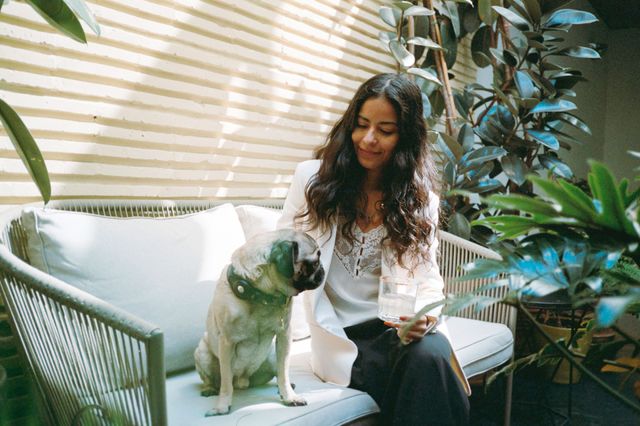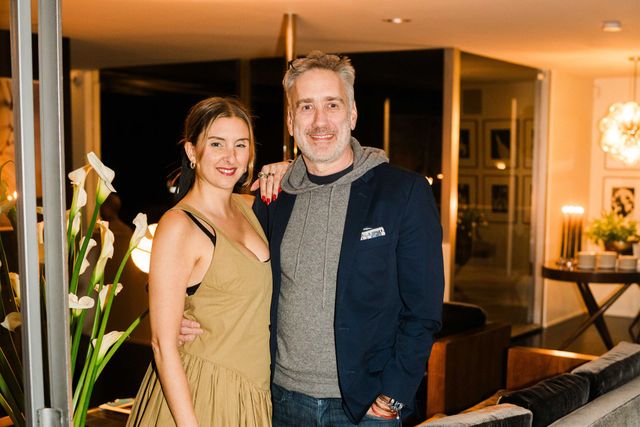Conversation with Ricky Lee Gordon of Śūnyatā
- Category
- Q&A
- Written by
- Roshan McArthur
- Published
- January 7, 2020
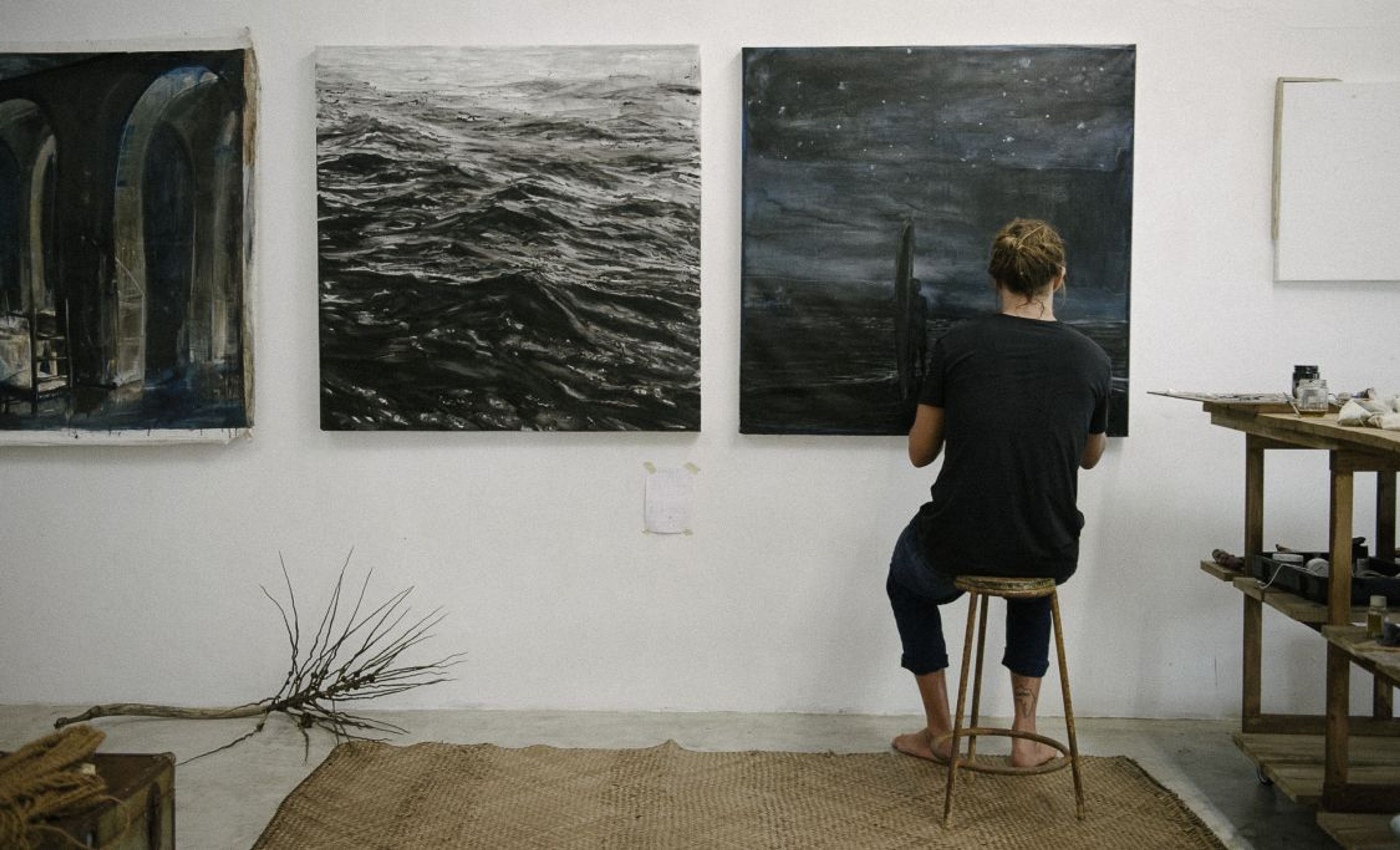
Artist Ricky Lee Gordon has traveled the world, but it’s Sri Lanka that he has chosen as home. It’s there, in an old fisherman’s hut under a Bodhi tree, that the South African native has designed a creative space for himself that he also opens to other artists.
Known for his large-scale murals across the world from New York to Istanbul and Madagascar to Kathmandu, Gordon built Śūnyatā as “a retreat back into the creative self away from the noise of the past and the future, a reminder and a reflection into the pure and innocent creative self.” It’s a simple space characterized by a striking use of light and elegant archways, plus bespoke features curated by Gordon and crafted by local artisans.
Art residencies are available by invitation, and so far these have included French artist and poet remed, photographer Marco Brandenberger, and multi-disciplinary artist Aaron Glasson. However, if you are interested in making your own art (or simply existing within this creative space), the house is also available to rent from December to February each year.
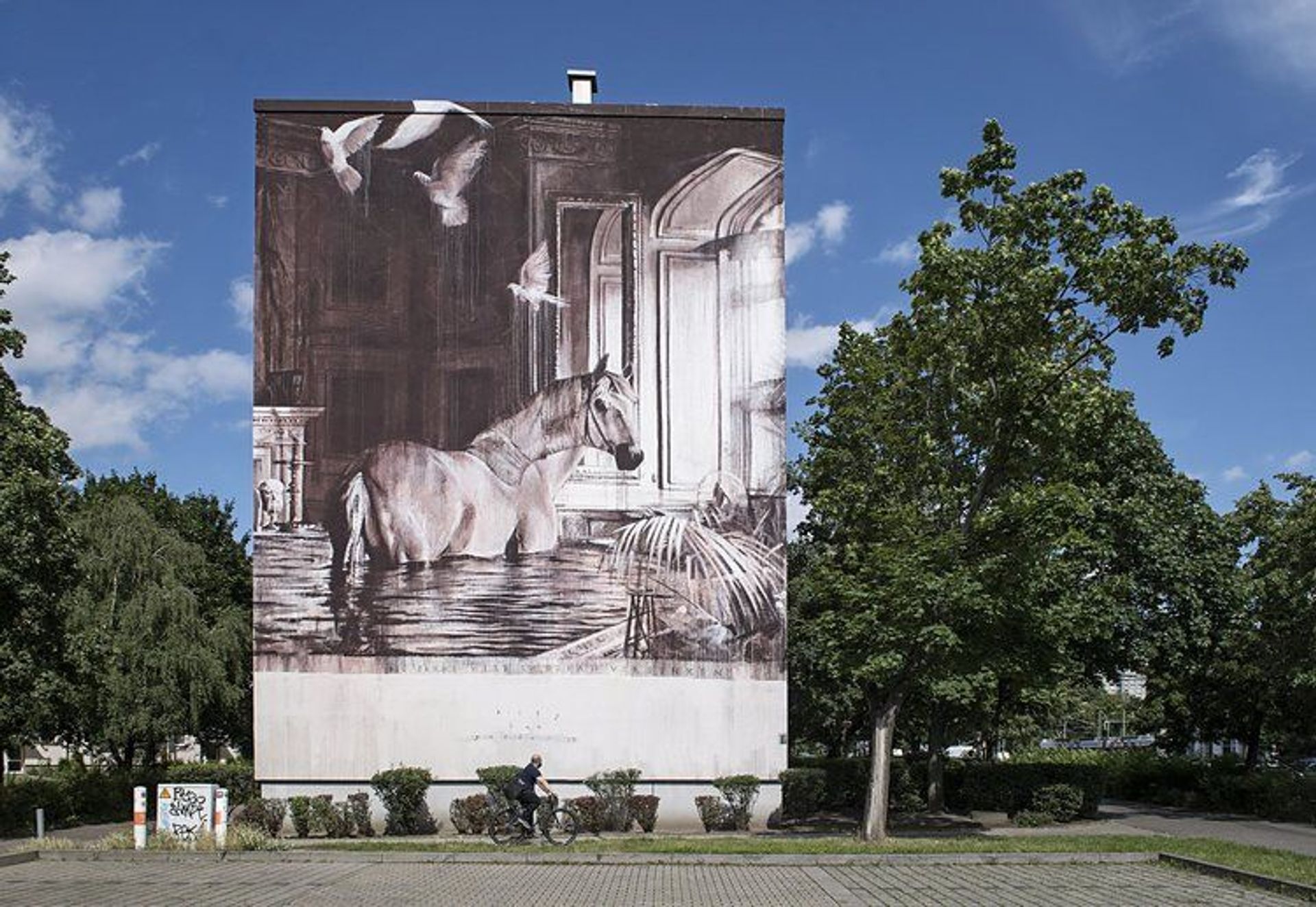
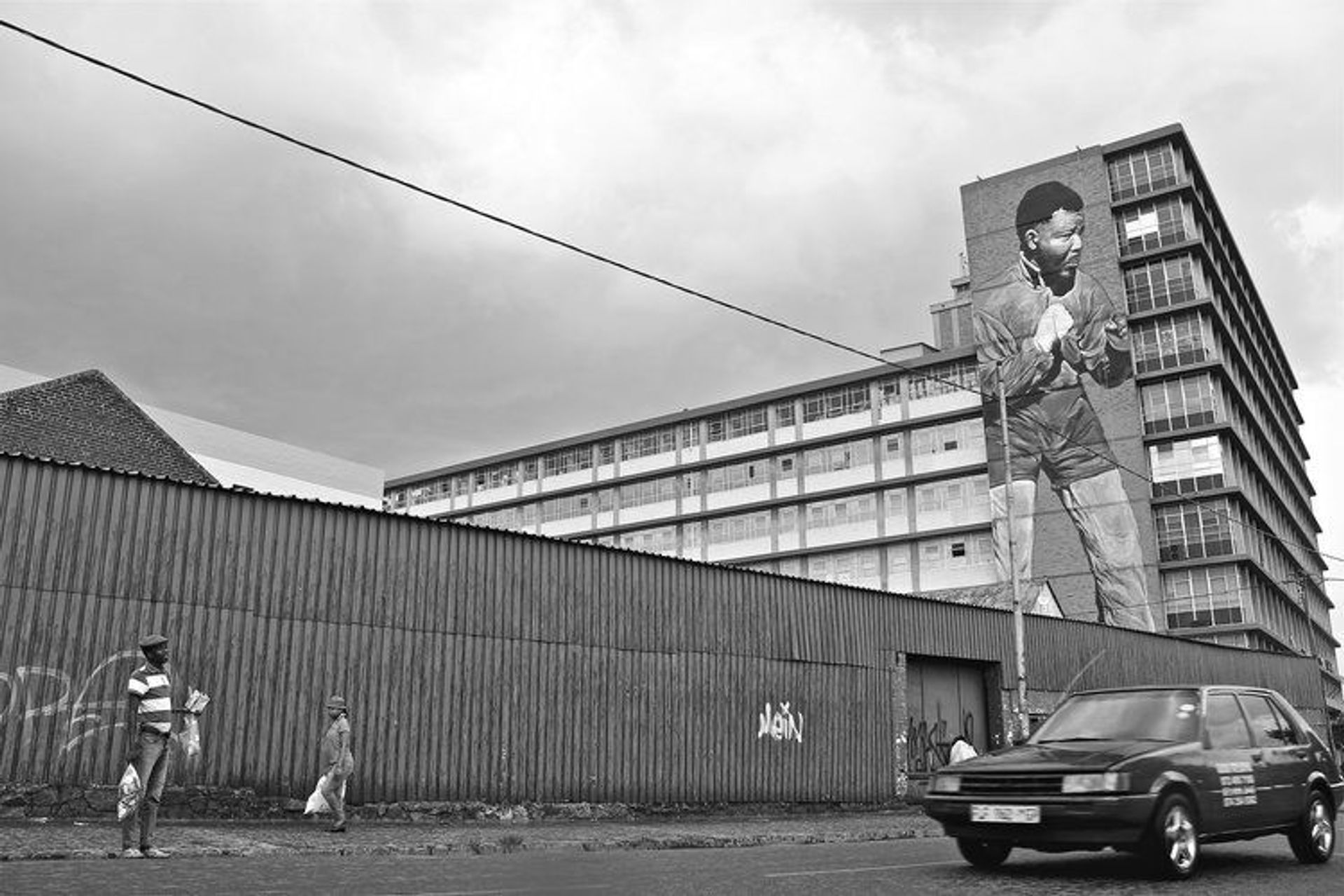
HOW DID YOU FIND YOURSELF IN SRI LANKA?
Ricky Lee Gordon: “I spent a lot of time in Bali, actually because I lost my passport while I was traveling there. I was stuck for 4-5 extra months due to a string of strange technical embassy errors. I fell in love with the slow tropical life, painting and surfing, and realized I wanted to build a studio in that kind of environment.
“Then four years ago, I visited Sri Lanka for the first time, where my interest in meditation and Buddhist teaching led me to a 2.5 month retreat in a monastery up north in Malsipura. I had a dear connection to this land straight away, and I knew Sri Lanka was where I needed to build my vision.”
WHY DID YOU CHOOSE THIS SPECIFIC LOCATION IN THE VILLAGE OF NILWELLA?
RLG: “I was looking in the area and I saw the Bodhi tree from the monastery hanging over the street and over an old fisherman’s house, and I knew straight away that was the place.”
WHAT WAS THE EXPERIENCE OF CREATING YOUR OWN HOME LIKE?
RLG: “It was the hardest project or work I’ve ever undertaken, and equally rewarding. I designed the house to live in, to make art in, to live a life I had dreamed of, so I put everything into it, all my physical and emotional energy into one thing.
“I first moved into the house as it was, cleaned and painted it white, put in a mattress and mosquito net, and lived there for a month to experience the space, sunrise, sunset, wind, etc. I designed everything that month, and a lot of the design came through responsive intuition as we went along. A lot of plans changed along the way, and I was on site all the time to see these opportunities and create them.”
AS AN ARTIST, WHAT ELEMENTS WERE IMPORTANT TO YOU WITHIN THE HOUSE? THE LIGHT IS AMAZING…
RLG: “Light, yes, is the most important for an artist. Space also. I wanted high ceilings, big open-plan spaces and minimal design, only what was needed. My inspiration was monastic/zen living, a house serving the function, living a certain way within a daily routine and practice. The bedrooms are smallish but the communal spaces, studio and garden are big.”

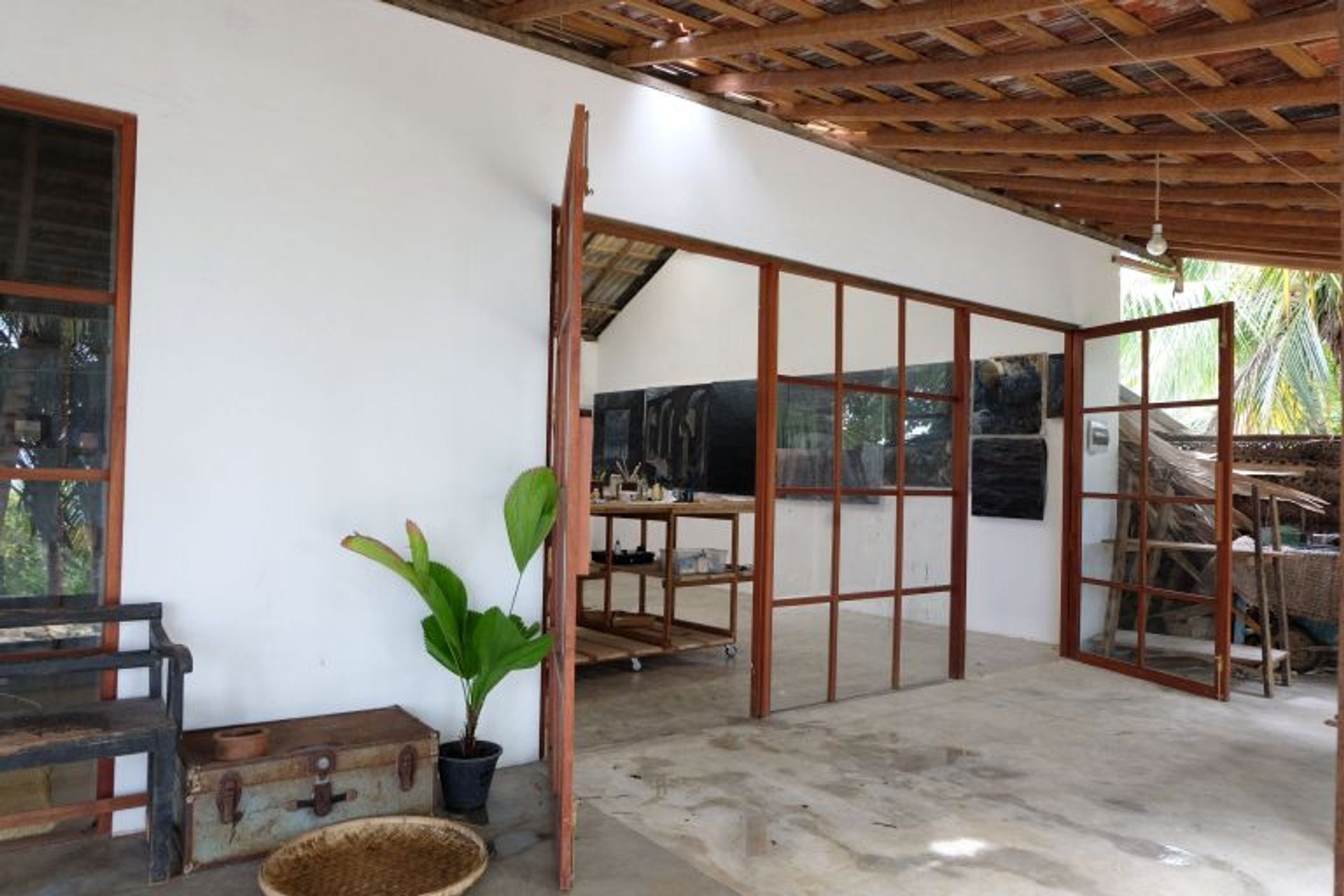

YOU’VE WRITTEN ABOUT USING SRI LANKAN ARCHES AS YOUR STARTING POINT FOR THE DESIGN. WHAT OTHER INFLUENCES SHAPED YOUR VISION?
RLG: “I was of course inspired by architect Geoffrey Bawa, and local craft. I wanted to use only what was easily available near my village, and also within a minimal budget. I wanted to make everything bespoke and take local existing ideas and push them or refine them a little bit further. Also again zen and minimalism was an inspiration — a clean space allows for more mindful living.
“The sink is terrazzo made from sea shells from the beach out front. It was my mason Kumara’s idea. I wanted to do terrazzo, and he made me a sample with sea shells one day on his own initiative. We had a great creative flow between us. All the sinks and showers have custom brass welded fittings, and every piece of furniture, shelving, palm leaf roof and window is designed by me and custom made by my carpenter, Shante.”

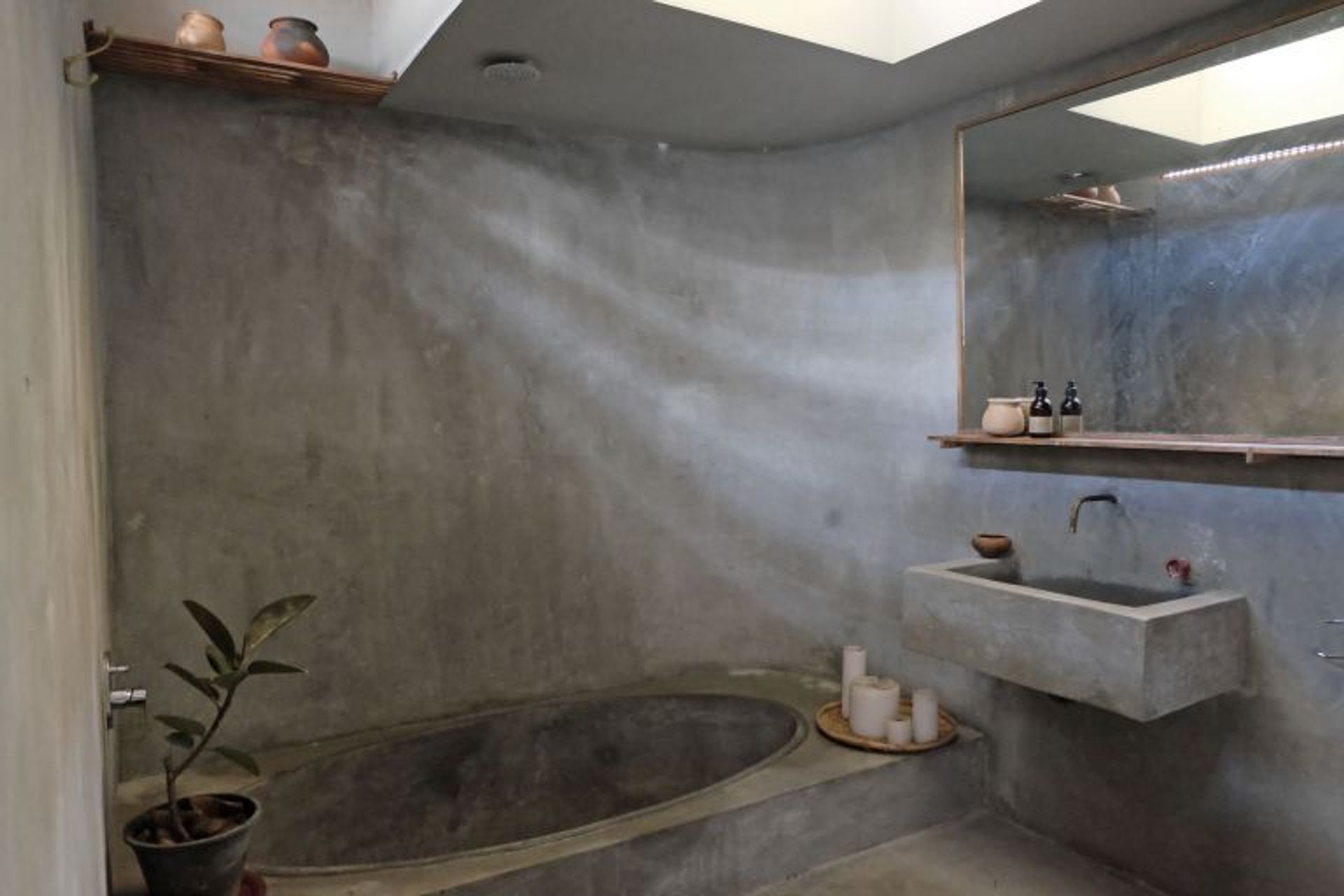
WHY DID YOU DECIDE TO CREATE AN ARTISTS’ RETREAT?
RLG: “I used to own and run a gallery and artist residency for many years in Cape Town, and I loved it. It was so much fun, with so much powerful creativity. I formed friendships with artists around the world and got to share my country with them. But it was too much work, and so I decided to only do my art.
“A few years later, I have again desired to share my space with artists. This time, though, I am only inviting artists who I am already friends with so the program is more intimate. I don’t even expect them to make art. The idea is to have a refuge that allows for them to reconnect with themselves to reignite that creativity in its innocence and purest form.”
WE LOVE THE IDEA OF ARTISTS LEAVING TRACES WHEN THEY LEAVE. WHAT PIECES OF ART HAVE BEEN LEFT BEHIND IN THE HOUSE SO FAR?
RLG: “Aaron Glason from New Zealand created a beautiful statue together with Kumara. The statue is an offering to nature and functions as a ode to the fisherman, like a lighthouse. It’s also a meditation platform and bird/monkey bath. It is form work and polished titanium.”
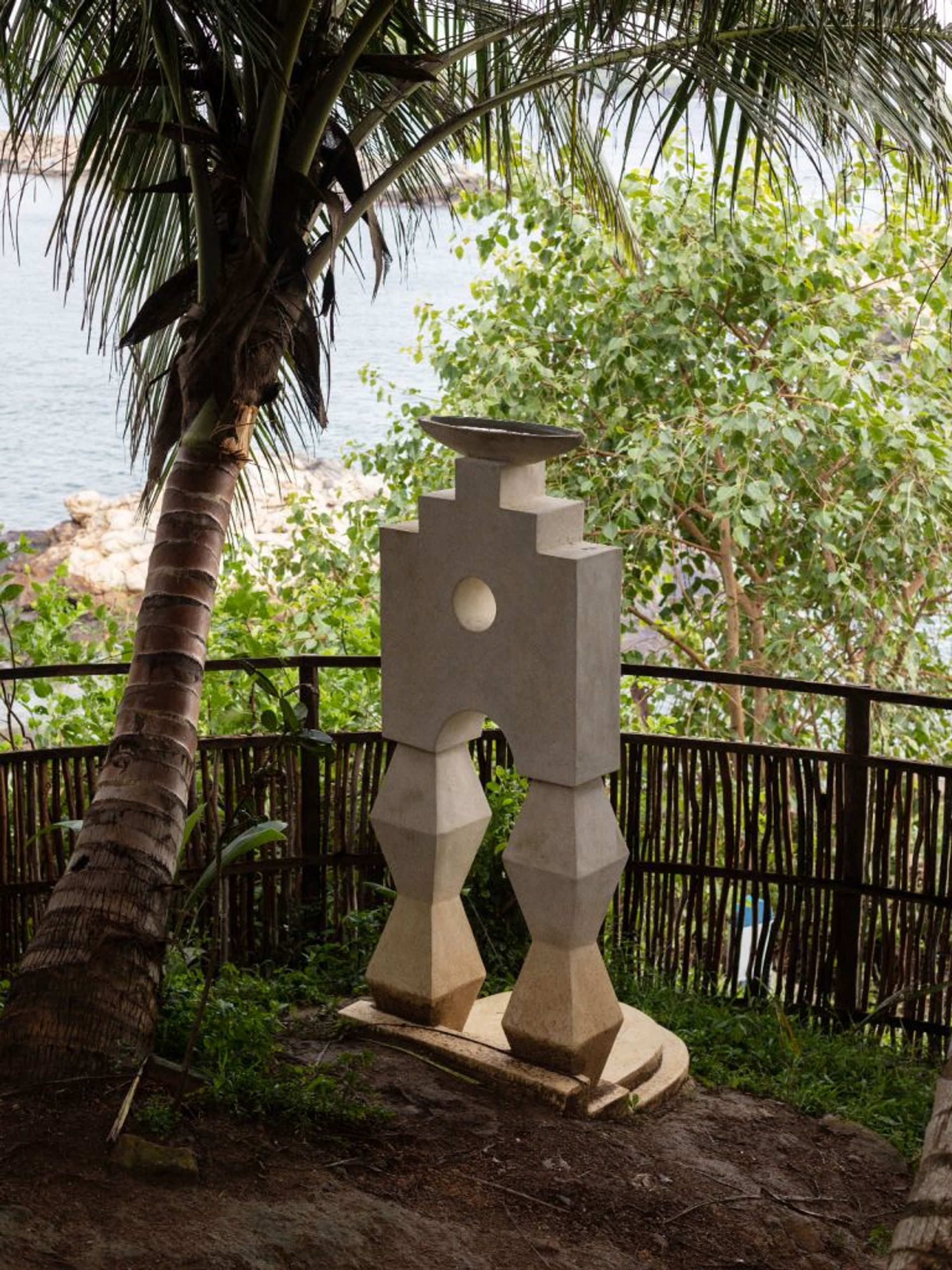
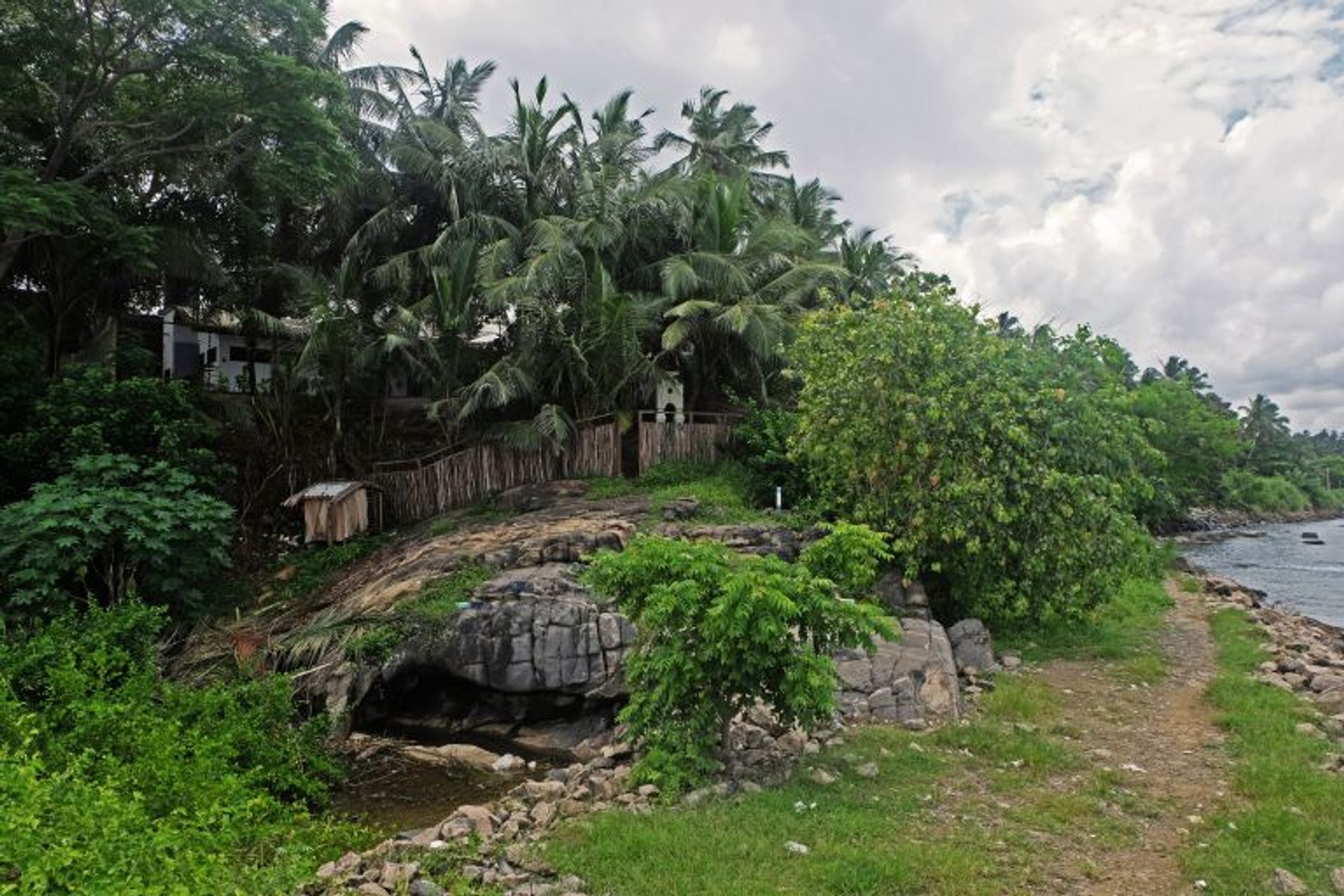
WHAT HAS SURPRISED YOU MOST ABOUT THE EXPERIENCE?
RLG: “I knew coming to do this I would be challenged, and I would have to shift what I know, adapt and go with the flow. That’s my nature anyways. I like the unknown and the risk and following some inner calling, ignoring the fear and using some faith or or even naïveté to make it happen because I knew deep down it was my path.
“I think I’m just so happy that it has all worked so well. Even the challenges were the best possible experience for me. And that I am just so happy here, living a very enriching and beautiful life. I feel very lucky.”
Find out more about the work Ricky Lee Gordon is doing at Śūnyatā, and about renting the space to create your own art (or just existing in it) here.
Photographs via Ricky Lee Gordon.
